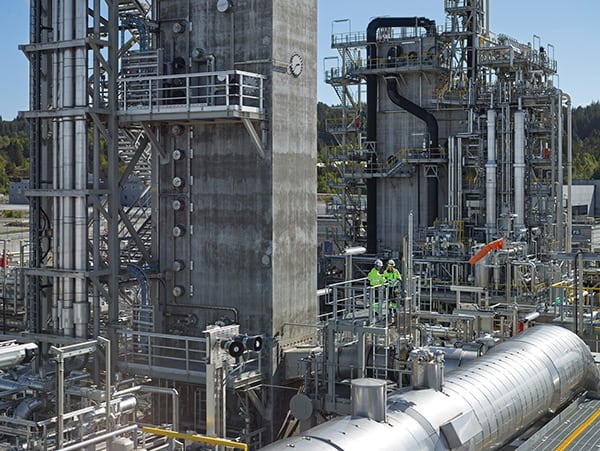Power Giants to Get Federal Funds to Develop Large-Scale Carbon Capture Pilots
The U.S. Department of Energy (DOE) wants GE to plan and propose a large-scale pilot test of a carbon dioxide capture solution that uses a class of amino silicone compounds used to soften hair or clothing.
The agency’s National Energy Technology Laboratory (NETL) said in September it will award the company $1 million in Phase I funding to test the solution at the CO2 Technology Center at Mongstad (TCM) in Norway (Figure 4).
As GE explained, at temperatures of around 105F, the amino silicone materials attach to CO2 gas. When the heat is increased by another 100 degrees F, the materials release the carbon and can then be reused to capture more. While it sounds unremarkable, the process holds a major advantage over competing approaches because it does not require water. That “substantially reduces the energy required to capture the carbon,” the company said.
GE’s proposal was among six projects that will receive federal funding for large-scale pilots to reduce the cost of carbon capture and sequestration (CCS). Southern Co. will get about $700,000 to test improvements to the CCS process using an existing 25-MW, amine-based CO2 capture process at Plant Barry in Alabama. NRG Energy will get $1 million to test Inventys’ VeloxoTherm post-combustion project, which will process a 10-MW slipstream of coal flue gas to separate CO2, likely at NRG’s Petra Nova W.A. Parish plant near Houston (where it is already retrofitting a CCS system). The University of Illinois will also get about $1 million to capture 500 metric tons per day of CO2 with a 90% capture rate from existing coal-fired boilers at the Abbott Power Plant on its Urbana-Champaign campus, using Linde/BASF’s amine-based absorption system.
Meanwhile, alongside GE, the University of Kentucky Center for Applied Energy Research (CAER) will receive about $1 million for a pilot facility at TCM that will use micro-algae to capture carbon from power plant CO2 emissions. Alstom Power will, at the same time, conduct a three-year pilot program at TCM to implement several concepts for improving and lowering the overall cost of Alstom’s chilled ammonia process.
Only two of the six projects will qualify for Phase II funding, the DOE expects. The Phase 2 awards for construction and execution of pilot testing are anticipated by mid-2016.
